The Best of CES 2023
And we’re back. After canceling our CES plans in (and ), the Engadget team sent a dozen staffers to CES 2023 this week, including reporters, editors and videographers. It’s too soon to say how many stories and videos we’ve published — in fact, we have more good stuff coming — but suffice to say, it was a lot. Though our team swears the show still wasn’t as busy as pre-pandemic years, they were kept busy enough that it felt like a true return to form, not just for us, but for the tech industry at large.
One thing that never stopped was Engadget’s annual Best of CES Awards program, although this year marks the first time in three years we’ve been able to base our judgments off of a full slate of in-person hands-on experiences. All told, we’re handing out a dozen awards this year, including the most prestigious: Best of the Best. As always, our awards attempt to capture what we think people will still be talking about weeks, or even months, after the show concludes, from wireless TVs to an to a that should make dough blending almost foolproof.
As ever, too, we endeavored to weed out the vaporware, not to mention the things that got attention solely for being dumb. (Hello, and a that only works when the baby isn’t on board!) If you’re curious about all the frivolity anyway — and who can blame you? — you’ll find all of our coverage, serious and irreverent, right . But for just the good stuff, you’re in the right place. – Dana Wollman, Editor-in-Chief
Best Accessibility Tech: L’Oréal Hapta
L’oreal
Rather than showing up to CES with a viral beauty gadget, L’Oréal debuted an assistive lipstick applicator that will be useful to millions. The cosmetics company worked with utensil maker Verily, which produces stabilizing and leveling cutlery for people with limited hand and arm mobility, to create Hapta. The result is a sturdy grip-and-gimbal system that lets those with limited finger dexterity or strength more independently apply lipstick. Though there are some quirks the company needs to iron out before releasing the Hapta in December, it’s impressive that this is both a finished product and has a relatively affordable suggested retail price of $150 to $200. It’s also a device that caters to an often overlooked segment of consumers, and can be expanded to work with more makeup applications. Of all the accessibility-related products we saw this CES, the Hapta is the most unique, while being actually helpful. — Cherlynn Low, Deputy Editor, Reviews
Best Gaming Product: Sony Project Leonardo

Sony
Project Leonardo is Sony’s first piece of gaming hardware designed specifically for people with limited motor control, and it happens to look pretty neat at the same time. Project Leonardo is a controller kit that’ll work out of the box with the PlayStation 5, offering two circular gamepads lined with swappable buttons, third-party accessory ports and other customizable inputs. The controllers lie flat on a table or they can be mounted on a standard tripod, and they can be paired with a DualSense to turn all three devices into a single gamepad, offering plenty of flexibility for players.
To build its new PS5 accessory, Sony partnered with advocacy organizations including AbleGamers and SpecialEffect, just like Microsoft did with the (wildly successful) Xbox Adaptive Controller. Project Leonardo represents another positive step for accessibility tech in video games, a market that’s filled with surprises and primed for growth in 2023. — Jessica Conditt, Senior Reporter
Best Heath & Fitness Product: Valencell blood pressure monitoring prototype
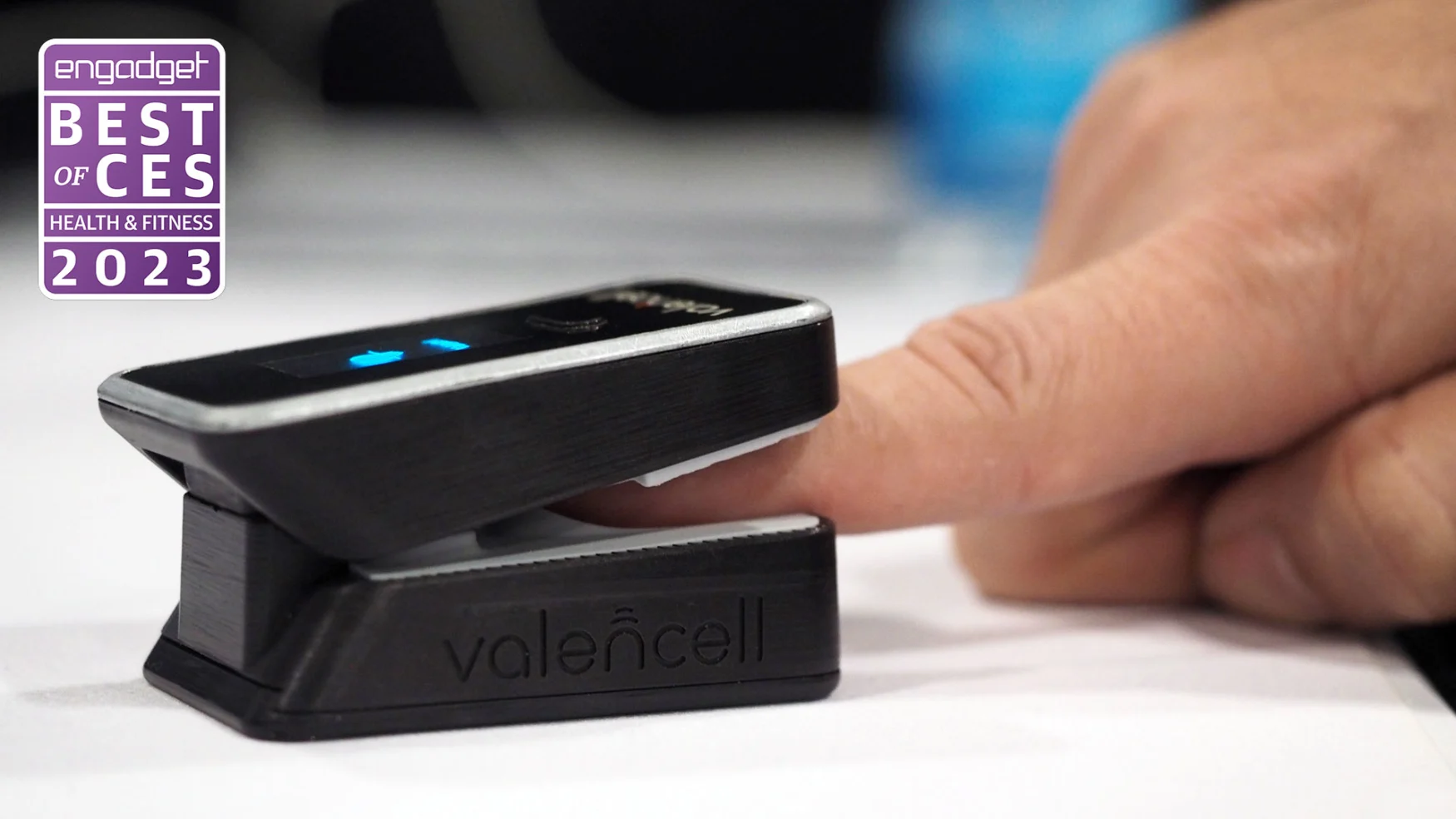
Valencell
Valencell has been making optical heart-rate sensors for years, but at CES 2023 it unveiled a new fingertip monitor that offers “cuffless” blood pressure monitoring. Instead of an unwieldy inflating sleeve, this fingertip clip uses photoplethysmography (PPG) sensors to measure blood flow patterns. This information is combined with algorithms and the user’s age, weight, gender and height to create a blood pressure measurement, without the need for calibration. We might have seen similar technology in earlier stages of development, but Valencell’s technique of combining data makes for the most compelling device yet. Valencell plans to eventually offer the blood pressure monitor to clinics and hospitals, alongside an over-the-counter version for personal use, pending FDA approval. — Mat Smith, UK Bureau Chief
Best Home Theater Tech: LG Signature OLED M3
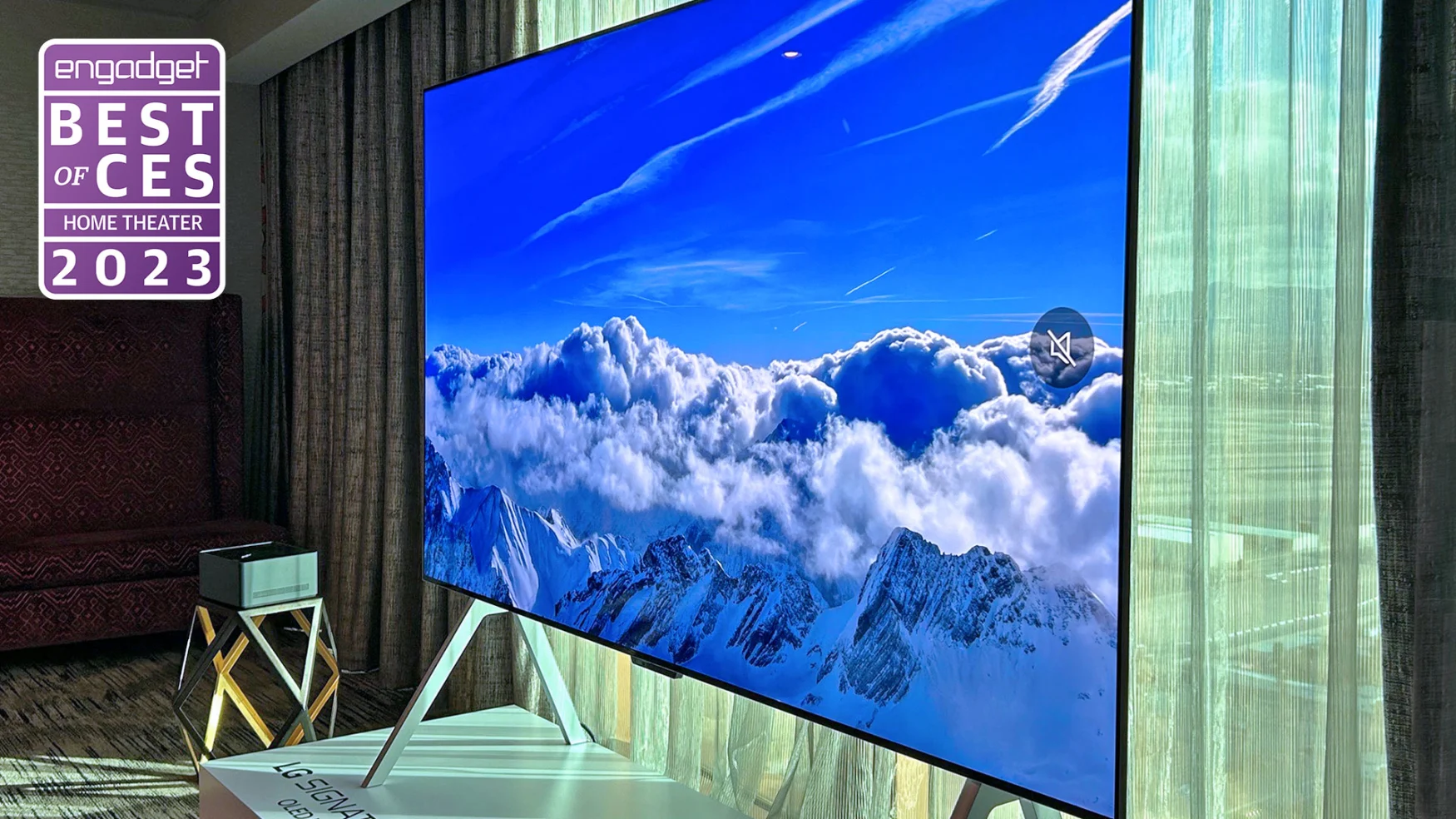
Engadget
LG unveiled several new OLED TVs at CES this year, but the standout was the Signature OLED M3, a 97-inch 4K giant. What’s most interesting about the M3, however, isn’t its screen – it’s the tech inside of it. More specifically, the M3 is designed to receive video and audio wirelessly, through a separate box that LG says you can place up to 30 feet away from the TV. Outside of a power cord, the M3 itself is cable-free; instead you plug your media streamers, cable box or game consoles into the breakout box, and all of it is beamed over a wireless link.
The company dubs this wireless transmission tech “Zero Connect” and claims this proprietary standard can provide three times the speed of WiFi 6. Among other connections, the Zero Connect box includes three HDMI ports that can play in 4K at 120Hz, including one eARC port. While it does require line-of-sight to work – there’s a rotatable antenna built into the box – in our brief experience with the set, we found the signal quality remained steady even in a crowded room. If Zero Connect can eventually make its way down to LG’s more reasonably priced TVs, it could provide an exciting new level of versatility. — Jeff Dunn, Senior Commerce Writer
Best Laptop: Lenovo Yoga Book 9i
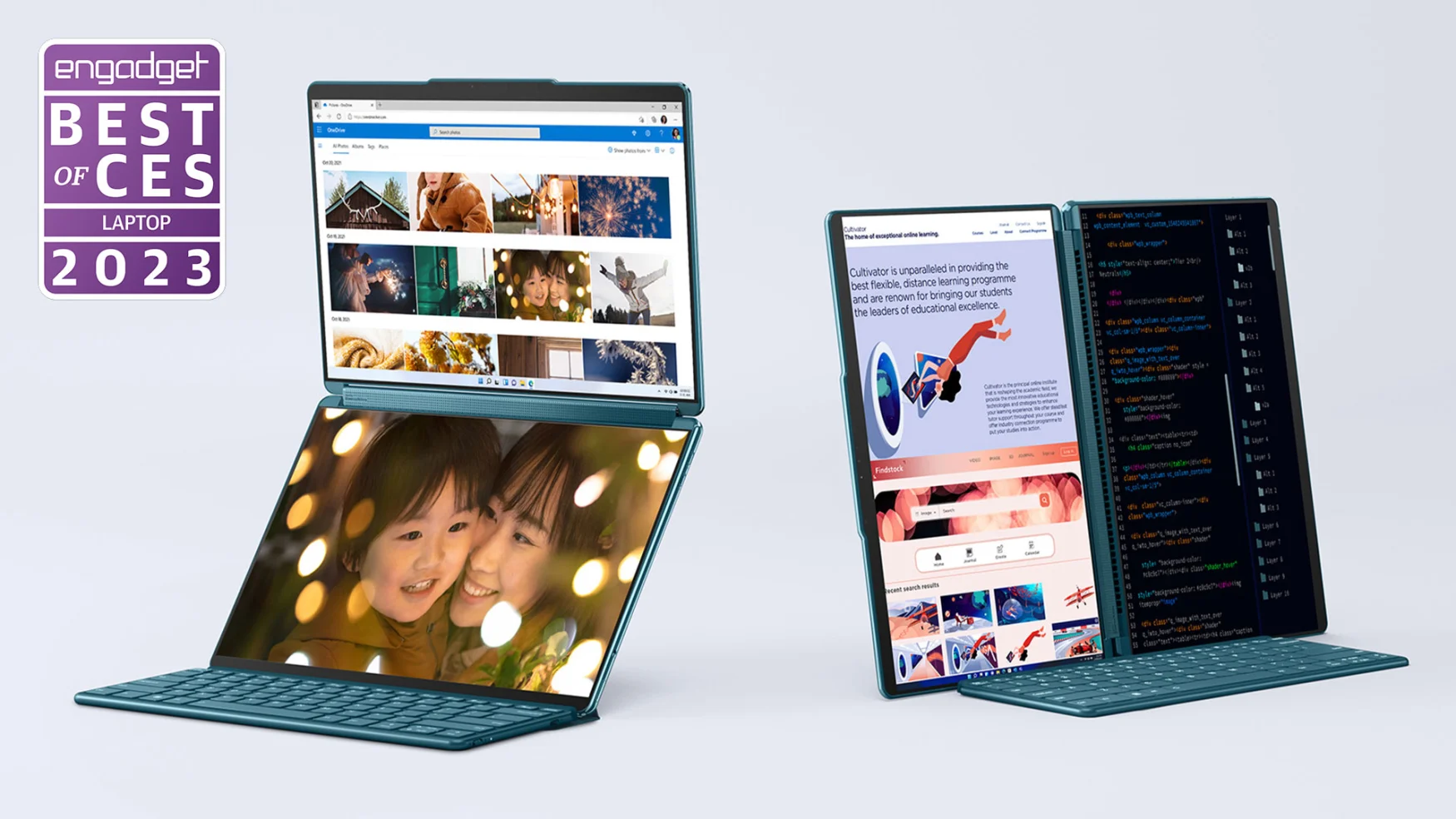
Lenovo
By axing the traditional, physical keyboard and putting two 13.3-inch OLED screens on the Yoga Book 9i, Lenovo could potentially shake up modern laptop design in a way we haven’t seen since the original Surface Pro a decade ago. And while there are some issues that will need to be ironed out, the potential this new design offers is undeniable. When you prop up the Yoga Book on its kickstand, it becomes much more than a standard clamshell. You can have two screens stacked on top of each other or side-by-side depending on your needs. Meanwhile in standard laptop mode, you have the freedom to choose between a virtual or detachable Bluetooth keyboard – both with customizable widgets, not to mention built-in stylus support. It’s a level of flexibility and adaptability that traditional laptops simply can’t match. And unlike overly ambitious concepts in the past, this dual-screen notebook is actually coming out (sometime this spring for around $2,000) so we can see how it will truly fare in the real world. — Sam Rutherford, Senior Writer
Best Mobile or Tablet Tech: WPC Qi2 charging standard
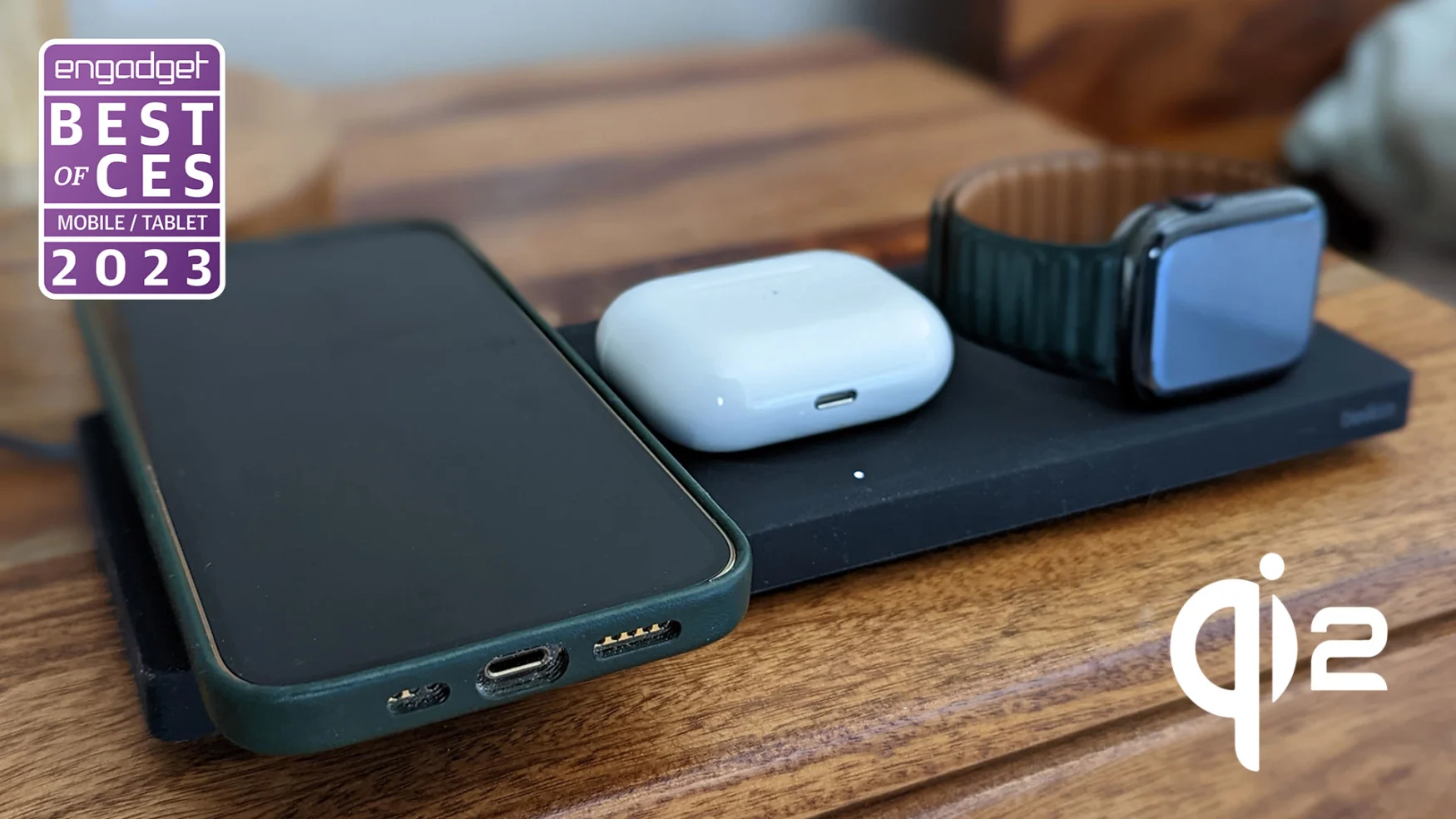
Engadget
When Apple added MagSafe charging to the iPhone back in 2020, it created an incredibly simple and convenient way of juicing up its phones. And now, at CES 2023, the WPC (Wireless Power Consortium) has released details on the Qi2 charging standard that will finally bring similar functionality to the rest of the handset market. Not only does the new spec include support for Magnetic Power Profiles which will pave the way for handy charging disks that can snap onto the back of your phone, it will also allow for important features such as foreign object detection and up to 15-watt charging with the potential to raise power output even further in the future. And perhaps most importantly, because Apple is a member of the WPC, Qi2 shouldn’t be a weak MagSafe knock-off when it arrives on retail devices later this year in Q4 2023. — Sam Rutherford, Senior Writer
Best Robot or Drone: KEYi Loona
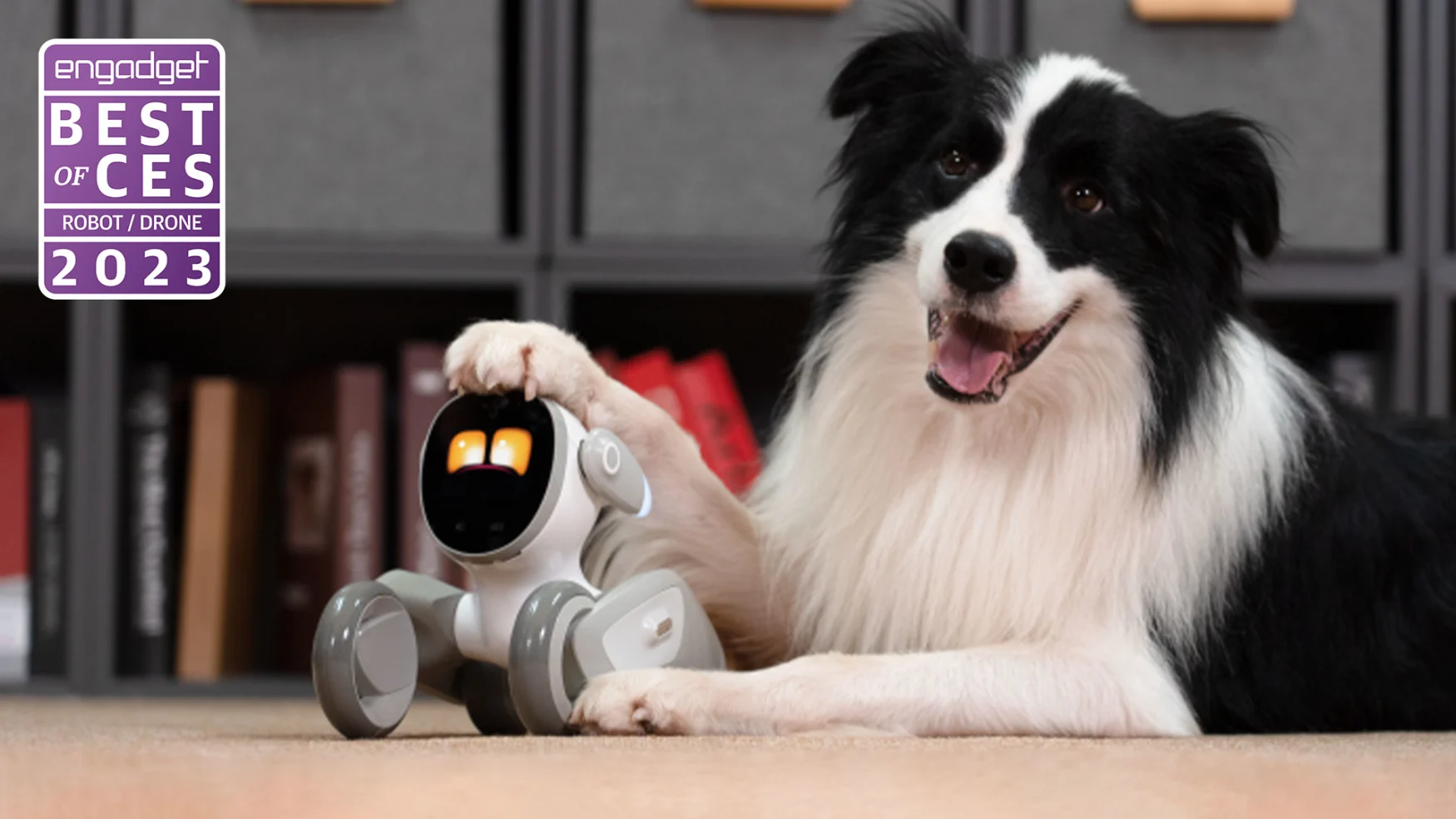
Loona
Historically, robot pets tend to be lacking in the cutesy department. Loona, the futuristic companion from KEYi, with its big puppy dog eyes and wiggling ears has the adorable thing locked down. Loona is smart enough to scurry around your living space without running into walls or off of countertops, but the real magic is in its expressiveness. It’s impressive what you can do with a small display, four wheels and two “ears.”
Beyond her charms, Loona also comes loaded with sensors for responding to your voice, gestures and touch and a collection of games that turn the virtual pet into quite the clever companion. These same sensors also make her a capable home security bot and something of a STEM tool for kids via a graphical programming option to teach Loona new “interactions.”
Put all this together and you have a capable home robot that just happens to love having its ears tickled. What’s not to love about that? — James Trew, Editor-at-Large
Best Smart Home Product: GE Profile Smart Mixer
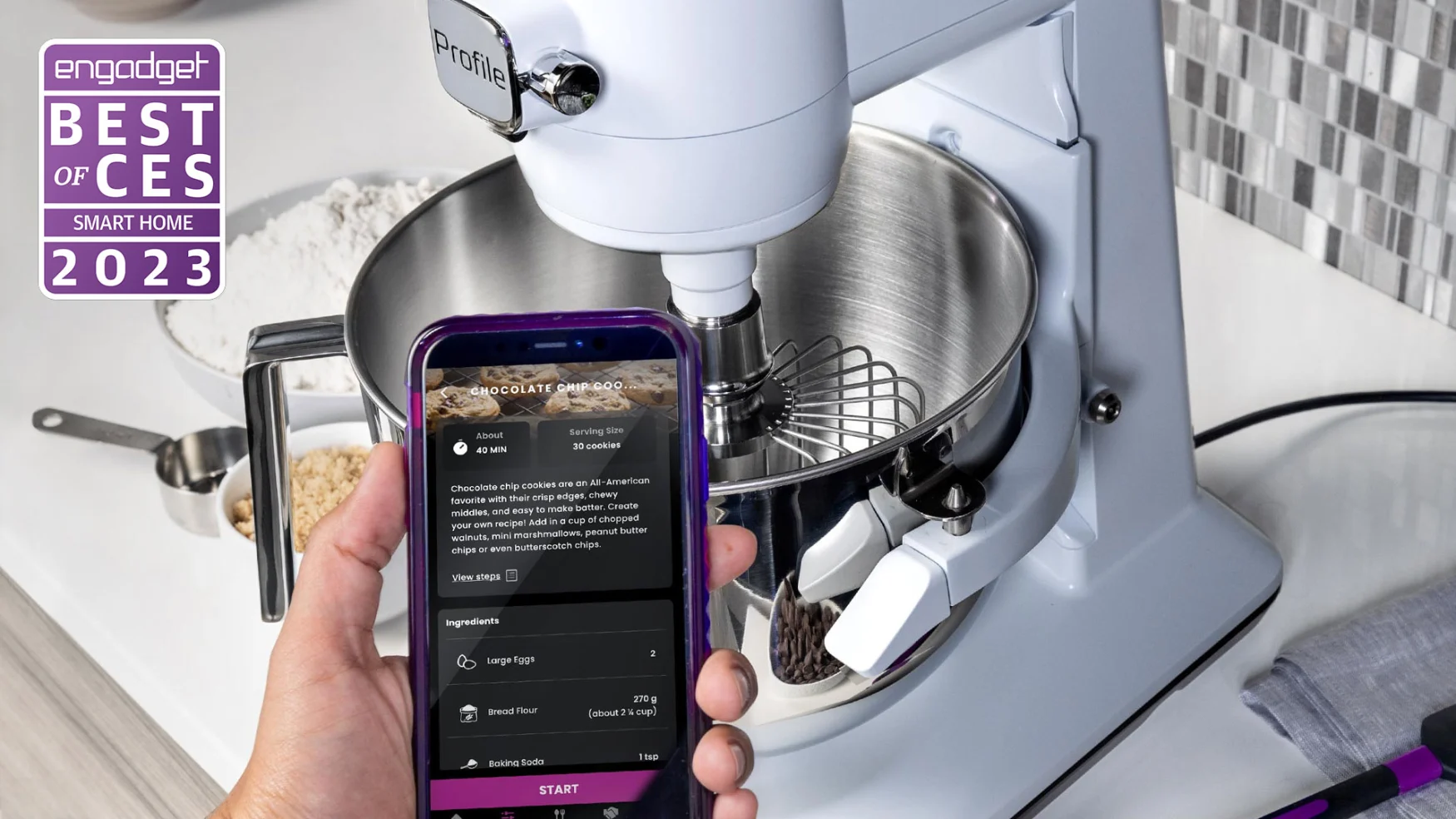
GE
Baking requires precision and, depending on the recipe, can often feel like a juggling act. So it impressed us to see GE Profile’s Smart Mixer, which has a built-in scale to accurately weigh ingredients, plus voice control so you don’t have to push buttons when your hands are otherwise occupied. The Smart Mixer is a high-end stand mixer in its own right, with a motor that’s speedy enough to whip up emulsions. But it gets its smart home edge from that integrated scale, app connectivity and voice control.
Indeed, the app component will probably be particularly useful for novice bakers, offering over a dozen step-by-step recipes. App guidance for cooking is nothing new, but here, the mixer knows what you’re making and will adjust mixing speeds as needed to ensure nothing is over- or under-worked.
For experienced bakers, the scale, timer and voice control are likely to have greater appeal. Scale and timer readouts appear on the front-facing digital display, which also shows you the mixer’s current speed setting. Changing that setting is as easy as asking Alexa or the Google Assistant to do it for you, provided you have a smart speaker linked. With a starting price of $999, it’s by no means a cheap appliance, but the suite of innovative smart features made this one of the more memorable smart home gadgets we saw at the show this year. — Amy Skorheim, Commerce Writer
Best Transportation Tech: Ram 1500 BEV Concept
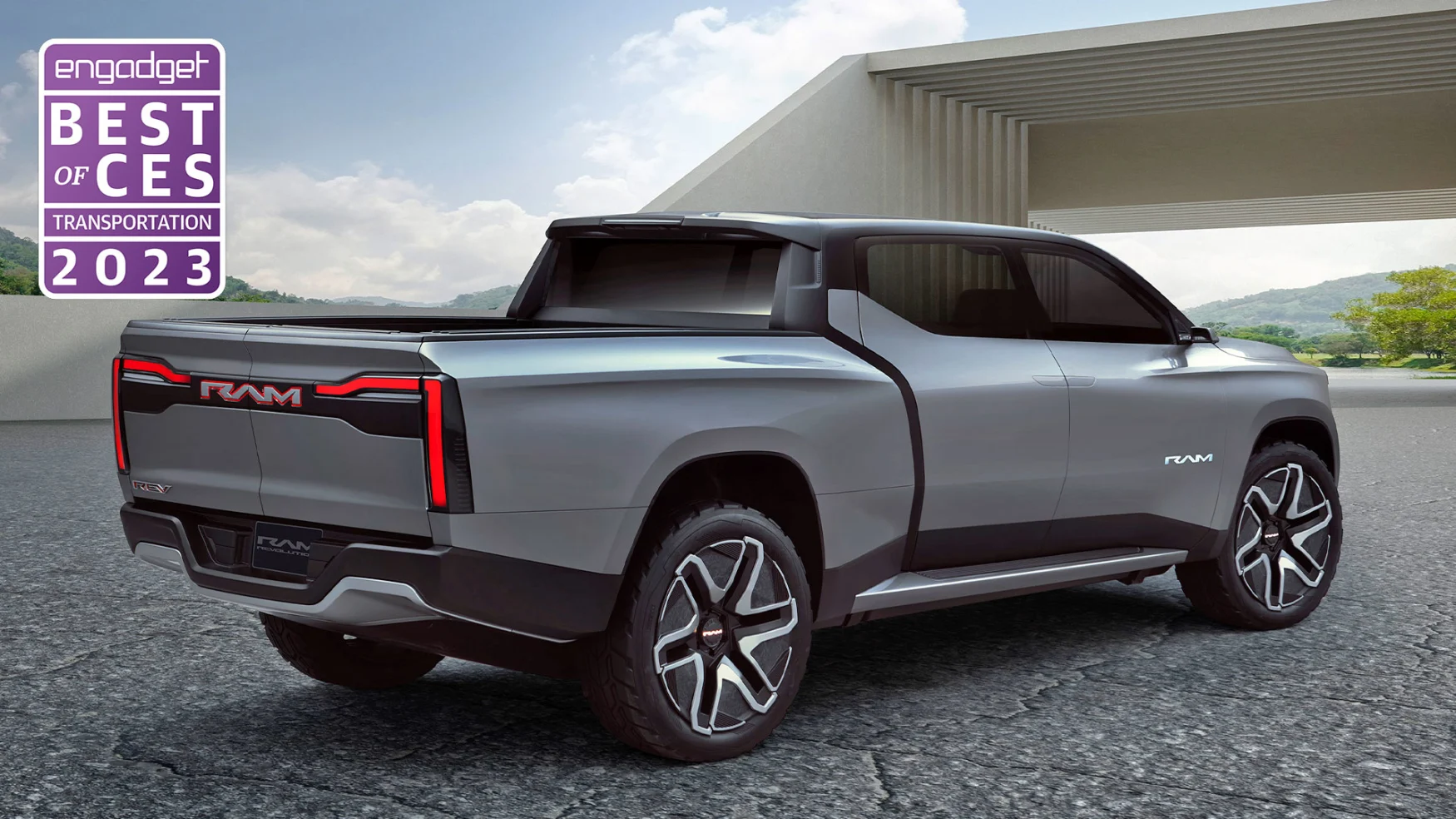
Stellantis
The Ram 1500, one of America’s most iconic trucks, is charging into the 21st century with a “revolutionary” battery electric pickup concept. The eponymously named Ram 1500 Revolution BEV Concept shown off at Stellantis’ CES 2023 keynote packs high tech everything into a sleek and aggressive body design. The BEV concept features dual-motor AWD, four-wheel steering, animated grille emblems, taillights and badging. Additionally, it has an integrated movie projector, AI assistants that respond to voice commands from both inside and outside the vehicle, as well as a Shadow Mode that trains the truck to follow along behind its dismounted driver from a safe distance.
Ram envisions this feature being used on job sites where workers would otherwise have to repeatedly get in and out of the truck between short drives. The BEV Concept itself won’t be entering production — ditto for most concept vehicles — but it will directly inform the design decisions going into the 2024 Ram 1500 EV, which will launch next year alongside Stellantis’ fully electric Jeep. — Andrew Tarantola, Senior Reporter
Best TV Tech: Samsung Micro LED
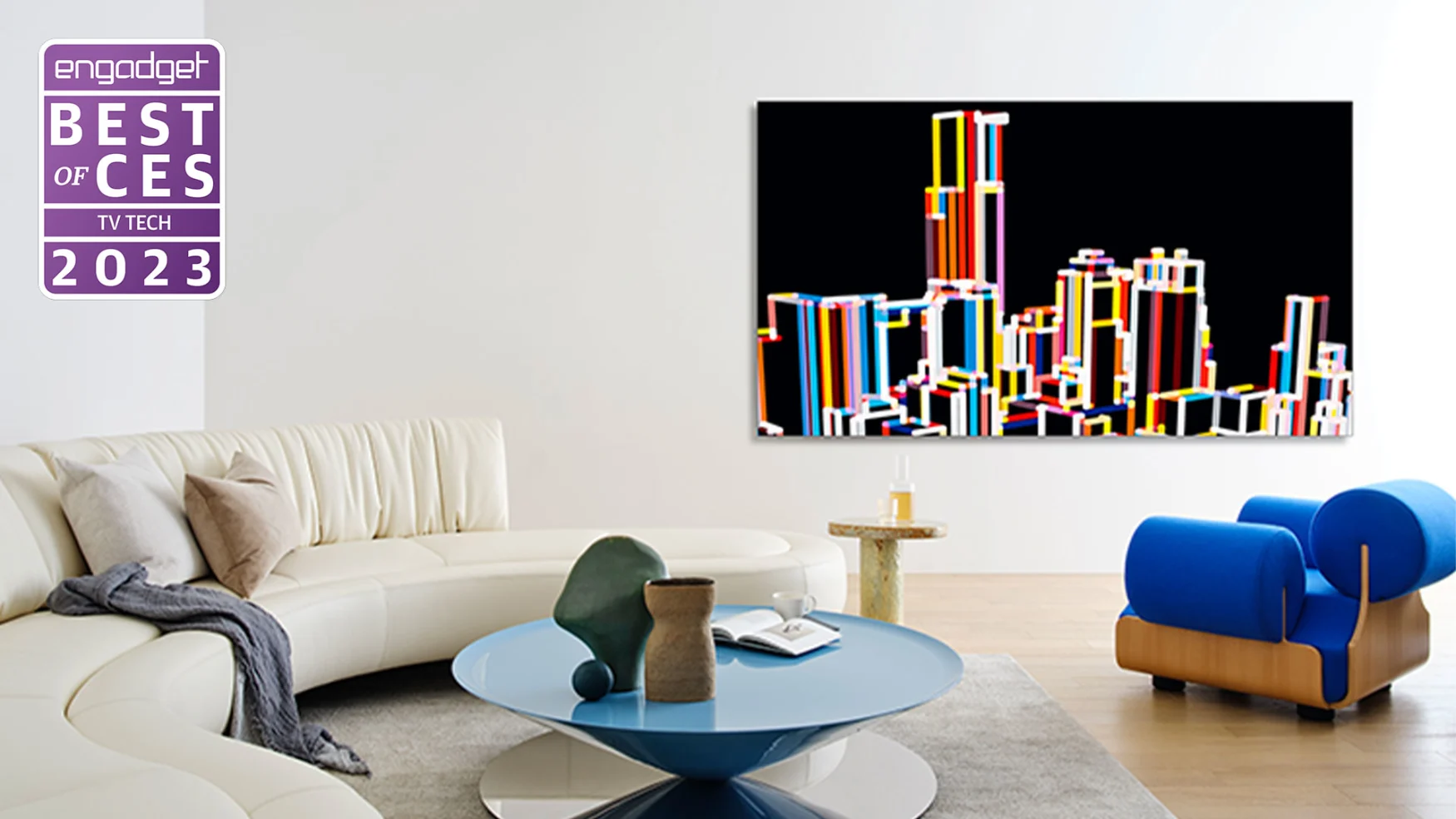
Samsung
CES has long been a show where tier-one manufacturers show off the latest and greatest in TV technology, giving us a preview of how normal people will be able to deck out their home theater setups once the tech goes mainstream. This year was no exception, even though Sony surprisingly didn’t show off any new televisions. What felt most significant in 2023 was Samsung’s continued advancements in its MicroLED TVs. The technology first debuted in 2018 with the company’s gigantic 146-inch TV dubbed “The Wall” that cost as much as a house, but now we’re seeing Samsung bring it to 50- and 63-inch TVs that will actually fit in people’s living rooms. Sure, the cost will likely still be prohibitive for all but the wealthy, but hopefully in a few years we’ll see these stunning screens available at a price more households can afford. — Nathan Ingraham, Deputy Editor, News
Best Wearable: German Bionic Apogee
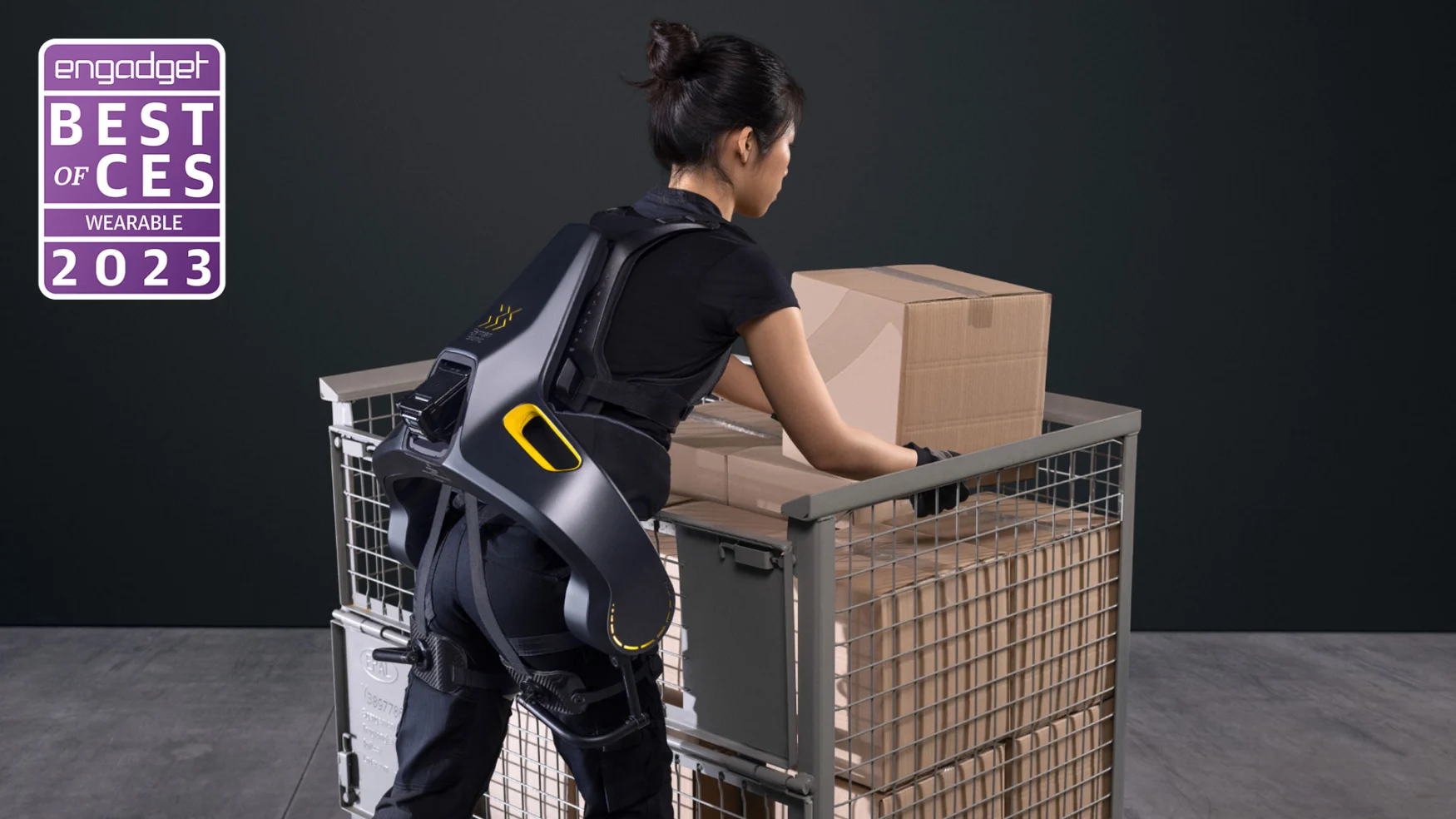
German Bionic
Our favorite wearable this year takes technology beyond the wrist-bound devices we’re used to seeing and puts it on your hips and over your shoulders. German Bionic’s new Apogee exosuit builds upon the company’s Cray X exoskeleton that it showed off at CES last year, resulting in a lighter, smarter wearable. Designed for commercial use, the Apogee exosuit helps workers complete physical tasks without inflicting as much strain on their bodies. The suit can offset up to 66 pounds of load to the lower back per lifting motion, plus it helps reduce fatigue overall with walking assistance.
The Apogee is German Bionic’s lightest exosuit to date and it’s designed to be worn for long periods of time, assisting workers without getting in the way. Plus, the company’s IO architecture constantly collects and analyzes data about workers’ activity while they’re wearing the suit, so it can then provide feedback via the onboard display or audio alerts when unsafe movements are detected. We’re almost disappointed that the Apogee will only be available in warehouses and other commercial settings – various Engadget staffers suffering from chronic back pain are eager to give it a go. — Valentina Palladino, Senior Commerce Editor
Best in Show: Sony Project Leonardo
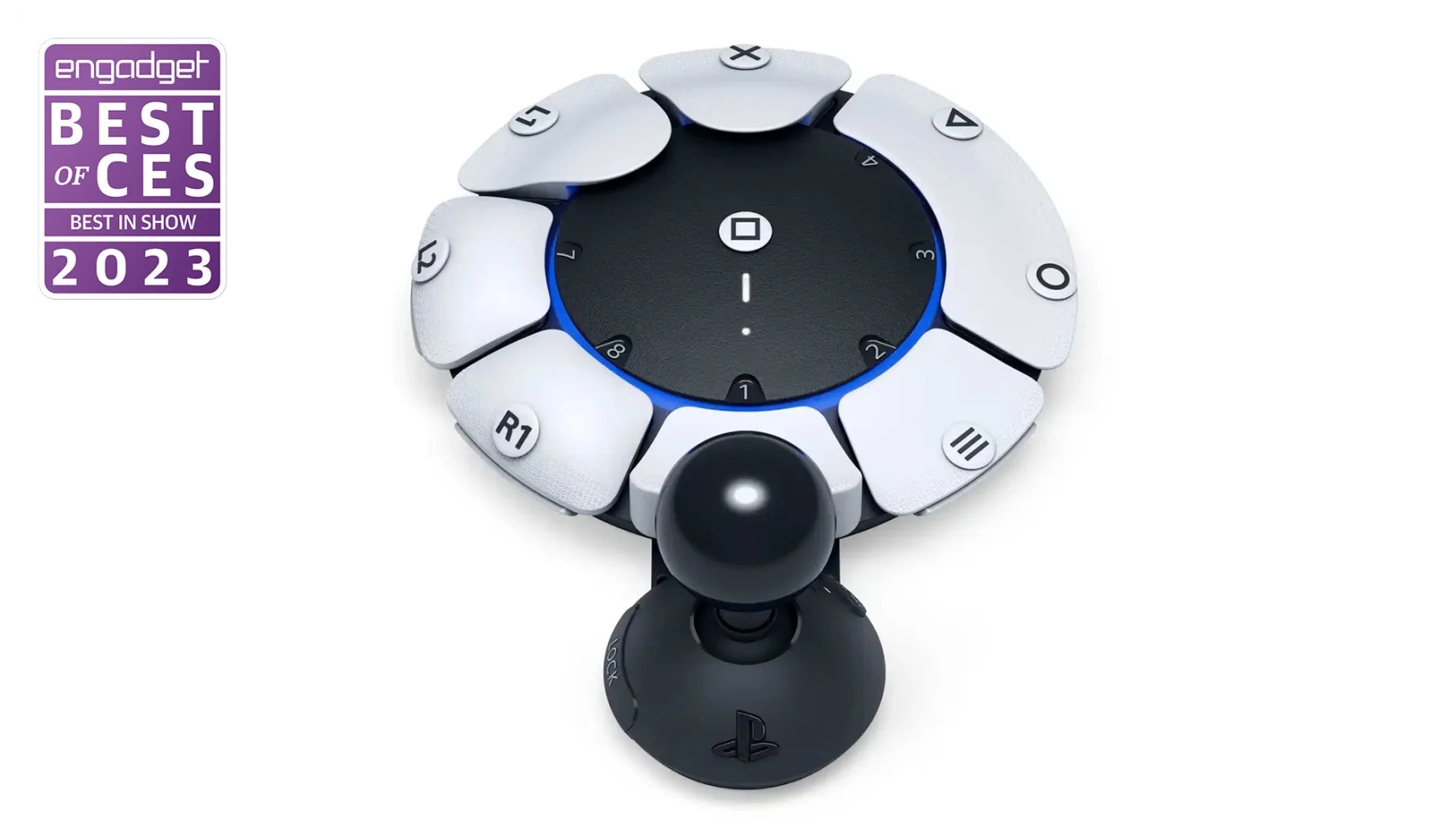
Sony
Project Leonardo is Sony’s first piece of gaming hardware designed specifically for people with disabilities, and it represents another positive step in the world of accessibility tech. Project Leonardo is a controller kit that will be plug-and-play with the PlayStation 5, working in conjunction with existing Sony hardware and popular third-party accessibility accessories. The controller kit includes two circular gamepads lined with swappable buttons, four 3.5mm AUX accessory ports and other customizable inputs.
The controllers were designed so that they don’t need to be held – instead, they lie flat on a table, or they can be mounted on a tripod or stand. Both controllers can be paired with a DualSense to turn all three devices into a single gamepad, offering plenty of flexibility for players.
To build its new PS5 accessory, Sony partnered with advocacy organizations including AbleGamers, SpecialEffect and Stack Up, much like Microsoft did with the revolutionary Xbox Adaptive Controller. Though there’s no release date or price for Project Leonardo quite yet, Sony is seizing on an opportunity to expand the PS5 playerbase while making its hardware more inclusive, and we’re likely to hear much more about the controller kit in the coming months.
The market for accessibility tech in video games is filled with surprises and primed for growth in 2023, and Project Leonardo is at the forefront this year. — Jessica Conditt, Senior Reporter
All products recommended by Engadget are selected by our editorial team, independent of our parent company. Some of our stories include affiliate links. If you buy something through one of these links, we may earn an affiliate commission. All prices are correct at the time of publishing.
For all the latest Technology News Click Here
For the latest news and updates, follow us on Google News.
